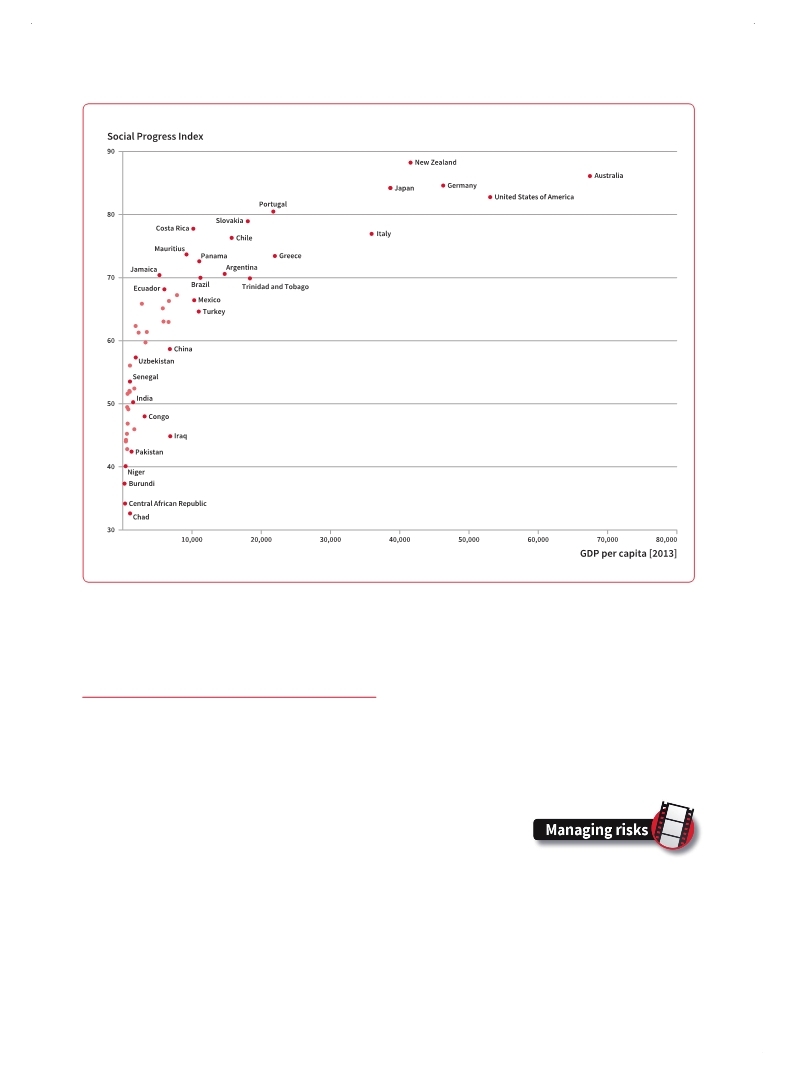 |
Global Assessment Report on Disaster Risk Reduction 2015
Making development sustainable: The future of disaster risk management |
 |
Global Assessment Report on Disaster Risk Reduction 2015
Making development sustainable: The future of disaster risk management |
|
|

250
Chapter 13
13.3 Managing internalities
Managing the risks inherent in social and economic activity, rather than mainstreaming disaster risk reduction to protect against external threats, is very different to the current approach to disaster risk reduction.
The use of human life years as a common currency to measure disaster loss now provides a more complete picture of the true magnitude and impact of disaster loss. This approach highlights that disaster risk is now as much a threat to human development and social progress as avoidable diseases such as tuberculosis and malaria in low and middle-income countries.
The SDGs are likely to feature an important health goal with a view to reducing the global disease burden, for example by ending epidemics of all communicable diseases by 2030. Reducing disaster risk can now be considered equally important if a more sustainable and equitable development paradigm is to be achieved.
Up to now, the relationship between disaster risk reduction, climate change and sustainable development has been addressed through the concept of mainstreaming. However, mainstreaming disaster risk reduction into sustainable development or into climate change adaptation or, for
Figure 13.2 The non-linear relationship between social progress and GDP
(Source: Social Progress Index 2014.1)
|
 
Page 1Page 10Page 20Page 30Page 40Page 50Page 60Page 70Page 80Page 90Page 100Page 110Page 120Page 130Page 140Page 150Page 160Page 170Page 180Page 190Page 200Page 210Page 220Page 230Page 240Page 241Page 242Page 243Page 244Page 245Page 246Page 247Page 248Page 249Page 250Page 251->Page 252Page 253Page 254Page 255Page 256Page 257Page 258Page 259Page 260Page 261Page 262Page 263Page 264Page 270Page 280Page 290Page 300Page 310
|
|
 
|
 
|
